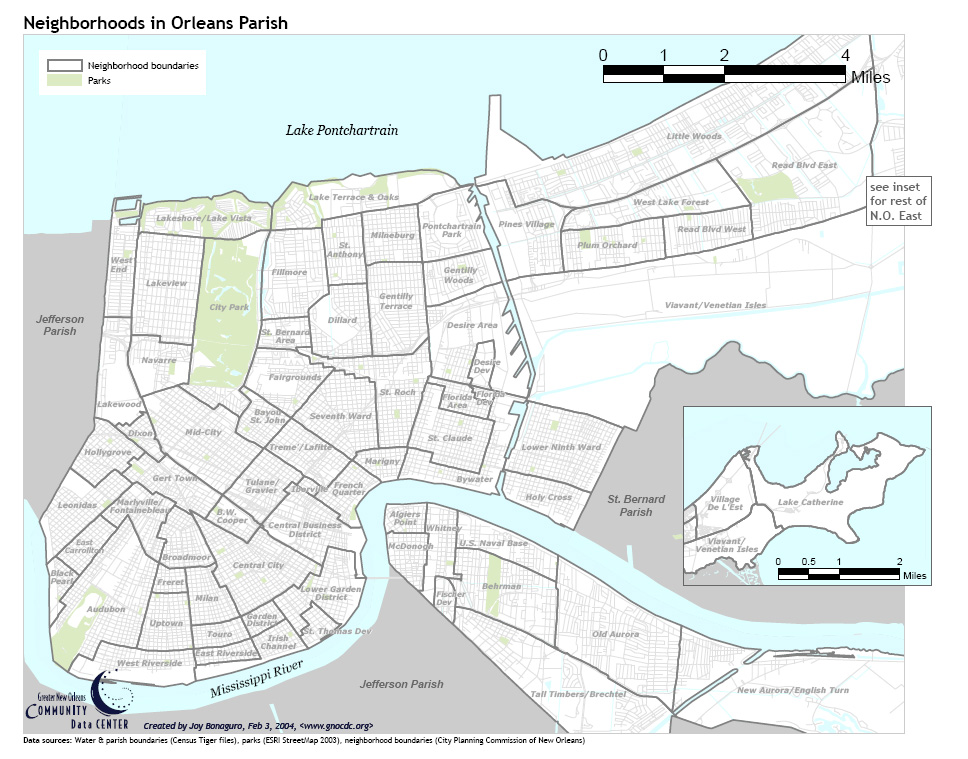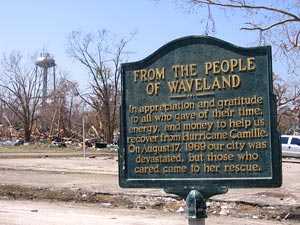 |
 |
 |
 |
 |
 |
 |
The City of New Orleans was originally
founded due to its
prime location at the mouth of the Mississippi River. In essence, it
provided an entryway to the far-reaching joint Mississippi-Missouri
River
system. For this reason, during the 18th and 19th
centuries, it was
eagerly sought after by major European nations who understood the
enormous
economic potential of establishing a port at such a prime location.
Historical records show that the first
European surveyor to
explore the territory of present-day Louisiana was Spanish conquistador
Alvar Nuñez Cabeza de Vaca, who led an
excursion through the area in 1528. The first Frenchmen to land in the
area
arrived in 1682, led by René-Robert
Cavelier Sieur de La Salle, who claimed all of the area that is drained
by the
Mississippi River for France in the name of King Louis XIV. He
appropriately
named his claim “Louisiana” (Louisiana, 2001-05).
New Orleans itself,
however, was not established until 1717, when John Law’s Company of the
West,
which had gained full commercial privileges to Louisiana that same year
from
Antoine Crozat, made the decision to establish a “port of deposit,” or
“transshipment center,” at the mouth of the Mississippi River, calling
it “Nouvelle-Orléans” in honor of Philippe
II,
duc d’Orléans, a region that lies to the south of Paris.
Jean-Baptiste le Moyne
de Bienville, who initially proposed the erection of the city, foresaw
New
Orleans as a vital checkpoint along the Mississippi River trade route
and
envisioned the city as a hotspot for financial profit from the
substantial
quantities of goods traveling up and down the river
(New Orleans, 2006).
Nonetheless,
problems with the actual construction of the city began almost
immediately. Two brutal hurricanes struck the region in
1721 and
1722, destroying much of the city’s new architecture. Other delays in
the
building process centered around a lack of adequate tools, the
utilization of
unmotivated prisoners as the principal work force, and the humid, wet,
mosquito-dominated natural environment in which they were forced to
toil. In
the end, the Vieux Carré, or French Quarter, was established on
the banks of
the Mississippi, and the capital of the colony was relocated there in
1722 (“New
Orleans,” 2001-05). To compare the size of New Orleans in 1722 to its
current
size, please refer to the map below, where the Vieux Carré is
labeled as the
“French Quarter:”

From the time of the
city’s establishment in the 18th century, its demographics
have
always been heterogeneous. In 1721, New Orleans’ population stood at
just under
500 people, of whom 59% were white, 37% were Black slaves, and 4% were
Native American
slaves (New Orleans, 2006). By 2005, the city swelled to 454,863
people, of whom approximately 28% were White, 68% were Black, and only
.2% were Native American (New Orleans city, Louisiana, 2005). Whatever
the exact numbers
may be
now and were back then, it is important to realize that the history of
New
Orleans sprung up from a mixture of different cultures
that
have had to coexist in a physically unstable environment.
The main reason for
New Orleans’ perpetual racial diversity stems from the fact that, upon
its
founding, it immediately became the largest slave port in North
America. Aside
from the revenues brought in by commercial shipping, the city thrived
on the
earnings of sugar plantations that succeeded solely due to the manual
labor of
enslaved Blacks. Furthermore, in 1805, the City Council coerced
prisoners and
slaves into work chain gangs that basically built up the entire
municipality, toiling on projects such as the erection of levees and
public
buildings, as
well as the beautification of streets. Essentially, the entire City of
New
Orleans was built up and expanded due to an extensive exploitation of
Black
enslaved peoples, resulting in what historian Walter Johnson calls
millions of
“social deaths” as innocent Blacks were maliciously torn from
their
families and forced to work endlessly and live vacantly without any
sense of
community or history. While at the same time, they were being
forced into providing rich whites with hundreds of
billions of
dollars in hard labor (Lavelle, K., & Feagin, J., 2006).
The
French, the Spanish, and
the Americans
From the
establishment of the city by the French in 1717, to its sale to the
Americans
during the Louisiana Purchase of 1803, New Orleans and Louisiana traded
hands
between the French and the Spanish on several occasions, each time in
secret.
In the year prior to the Treaty of Paris of 1763, France furtively
relinquished
its colony to Spain in an enthusiastic attempt to rid itself of the
successive
economic failures of Louisiana. Less than half of a century later,
Spain
clandestinely returned the land to Napoleon, who almost immediately
sold it to
Jefferson. In fact, the ceremonies that occurred when Louisiana
was
handed over to France and then to America occurred in the heart of New
Orleans
at the Place d’Armes, or Plaza d’Armas, now called Jackson Square after
General
Jackson, who (although unnecessarily, since the War of 1812 had already
ended)
defeated the British in 1815 and successfully protected the city (New
Orleans,
2006). To take a virtual panoramic tour of Jackson square, please click
on the
following link: http://www.atneworleans.com/body/qt-jackson-square.htm.
Prosperity
and Hardship
From the 1820’s to
the 1850’s, New Orleans grew in area, population, and wealth, as money
poured
in from both agriculture (growing cotton, tobacco, indigo, rice, and
various
vegetables) and commerce. The city
became a major cotton port for the
Aside from battling
a debt of $24 million (in the 1880’s), New Orleans also faced the
recurring outbreaks of yellow fever, the worst of which occurred in
1853 (however, they continued until 1906, when the disease was finally
wiped out). Unfortunately, even with a more healthy population,
New Orleans was
never
able to fully recover from the economic blows of the Civil War (New
Orleans,
2006). With the enactment of the Jim Crow laws in 1890, virtually all
of the
power in the city went to white supremacists who degraded
Decline
during the Twentieth
Century
The
percentage of African Americans in the city continued to rise through
the first
half of
the twentieth century while the primarily Caucasian upper class
relocated to the outlying suburbs. This “white flight” began
after the
end of World War II and continued well into the 1960’s, when city
officials
tried to integrate New Orleans’ public schools for the first
time. This drove
even more whites out of the city in a migration that mirrored similar
ones in
almost every major American city and left New Orleans more
impoverished than
ever before. The urban renewal projects of the 1950’s and 60’s did
nothing for
the economy and only drove many educated, artistic black families from
the
central neighborhoods into New Orleans East. To top it off, at the end
of the
troublesome decade in 1969, Hurricane Camille tore through the city,
destroying
buildings and claiming almost 150 lives in Louisiana and
Mississippi. Below, a
plaque in

New Orleans did
witness a slight rise in its economy during the oil boom of the 1970’s,
as
businesses invested in the city’s infrastructure. However, by the time
of the
World’s Fair of 1983, speculators had lost interest in the city and the
economy
had begun to crumple once more. Even the legalization of gambling in
1992 could
not jump start the economy and the city’s population began to slowly
decline by
the end of the twentieth century (New Orleans: History, 2000-2005).







